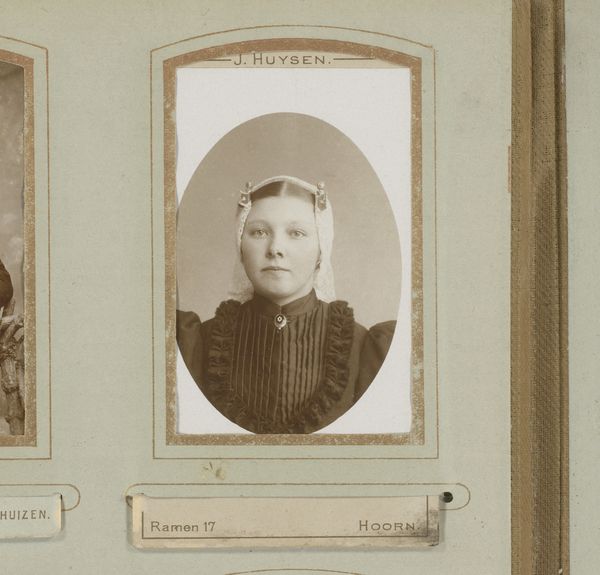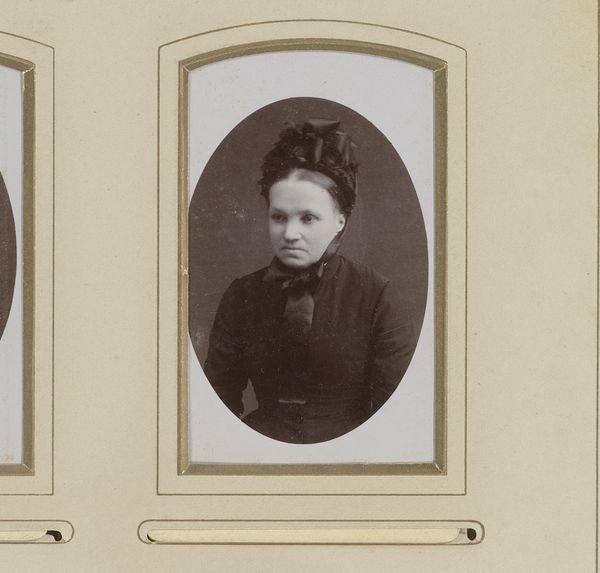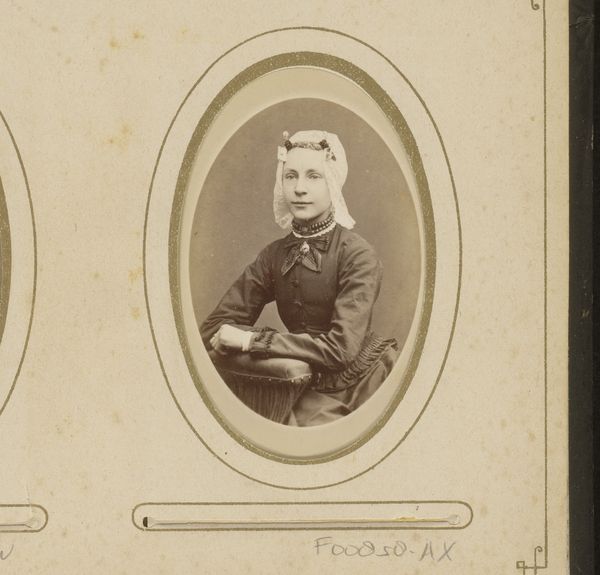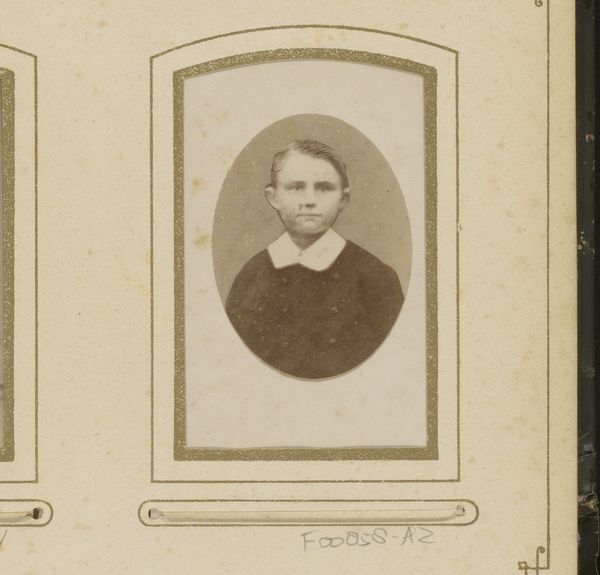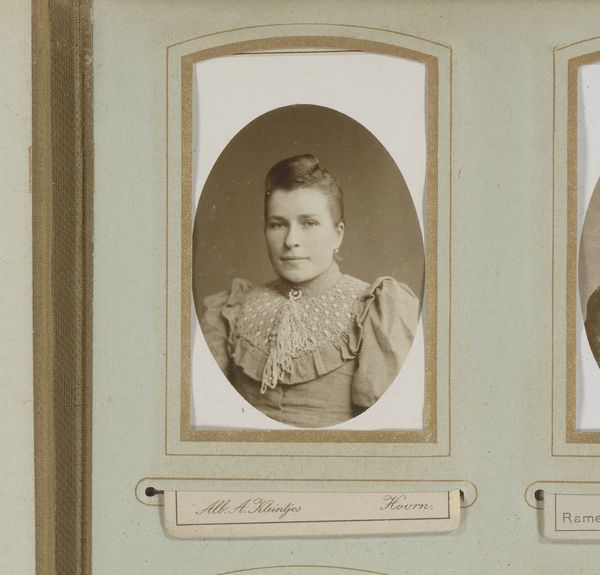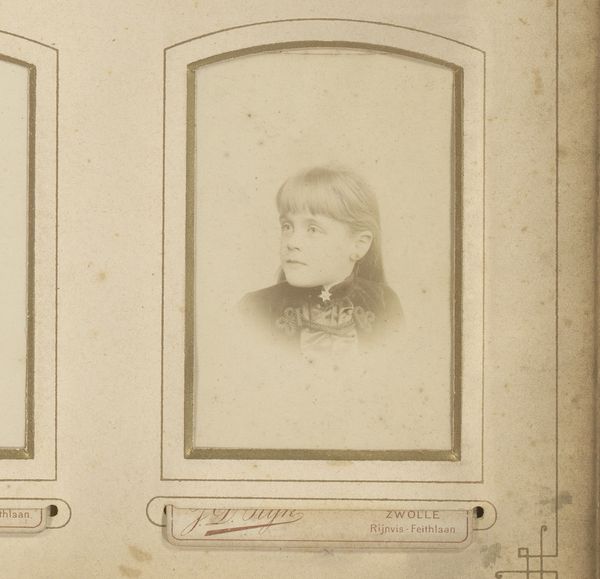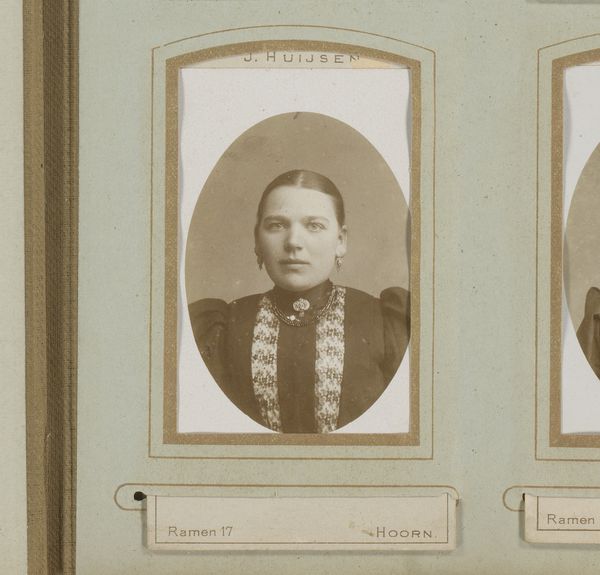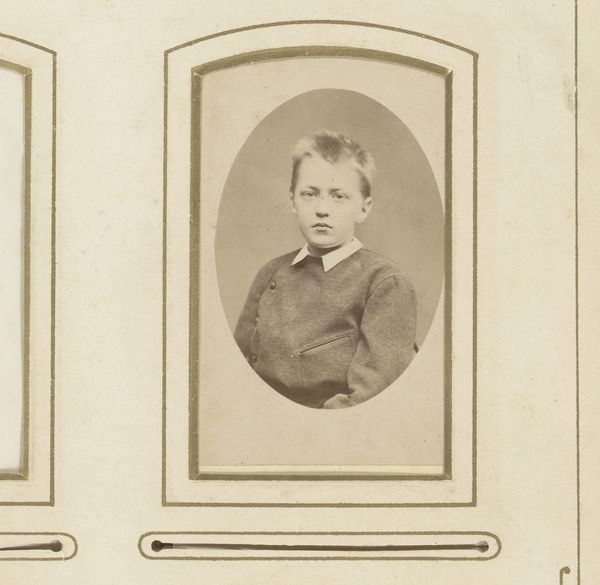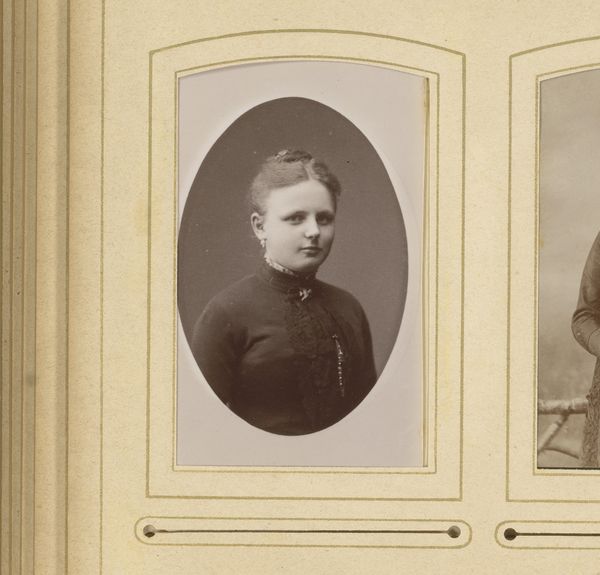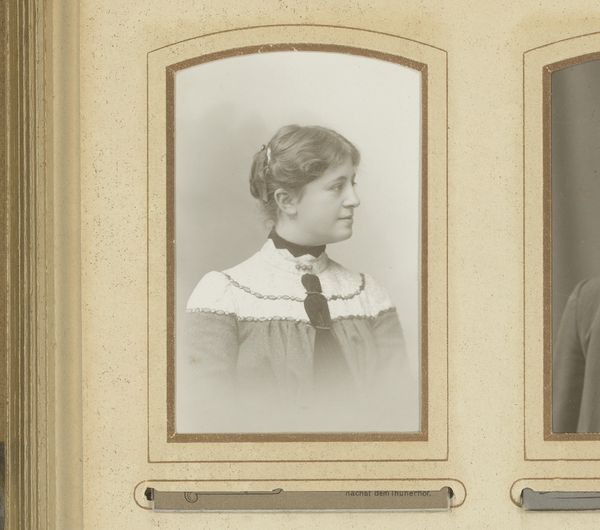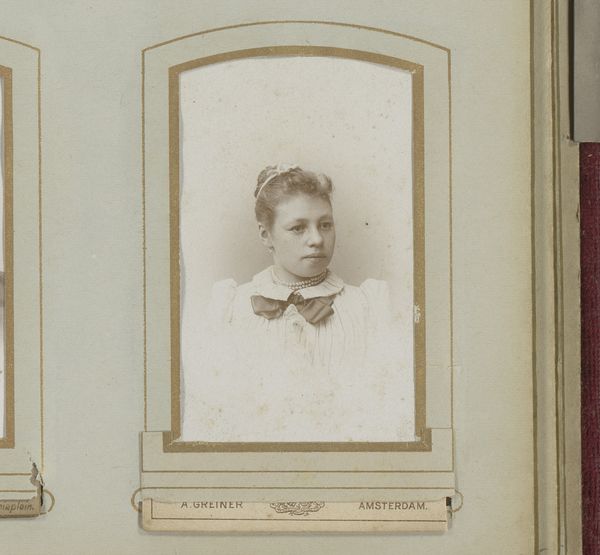
photography, gelatin-silver-print, albumen-print
#
portrait
#
photography
#
gelatin-silver-print
#
photographic element
#
watercolor
#
albumen-print
#
realism
Dimensions: height 81 mm, width 50 mm
Copyright: Rijks Museum: Open Domain
Curator: Here we have a portrait from the Rijksmuseum’s collection entitled "Portret van een jonge vrouw," made between 1883 and 1910 by Johannes Laurens Theodorus Huijsen. The medium is gelatin silver print, sometimes also known as an albumen print. Editor: It's compelling. There’s something haunting in her eyes, an intensity. The dark clothing and muted tones create a rather solemn mood, even for a portrait of the time. It almost has a watercolor effect to it. Curator: I agree. And considering the time period and the sitter's dress, this photograph represents the developing material culture of photography. Huijsen captures a woman situated, I'd wager, in a comfortable middle class existence as she takes advantage of emerging portrait photography. This photographic element captured in the silver gelatin tells the tale of an individual within evolving social trends. Editor: Indeed. But her face! Those serious eyes surrounded by carefully coiffed hair and somewhat elaborate lace speak volumes. The way she holds herself—the erect posture and direct gaze—conveys pride but maybe also an underlying sense of constraint, as though representing not only herself, but something larger than herself. Do you suppose the dress code and hairstyle held any other symbolism? Curator: Almost certainly. Each detail, the dress and jewelry, would have signaled particular social status and allegiance. This relates not just to the individual sitter but speaks to the social structures and emerging economies that portrait photography captured. By examining the various economic demographics who indulged in portrait photography, we see social expectations materialized. Editor: I am drawn to think of her gaze and pose reflecting both societal expectations but, moreover, this person's emotional experience within them. This portrait gives me pause as I contemplate a particular woman's experience now only preserved through these enduring visual symbols. Curator: A vital point, emphasizing how individual experiences fit into historical and economic narratives and structures. Thanks for this analysis! Editor: And thank you for drawing attention to the process that formed these powerful symbolic elements!
Comments
No comments
Be the first to comment and join the conversation on the ultimate creative platform.
